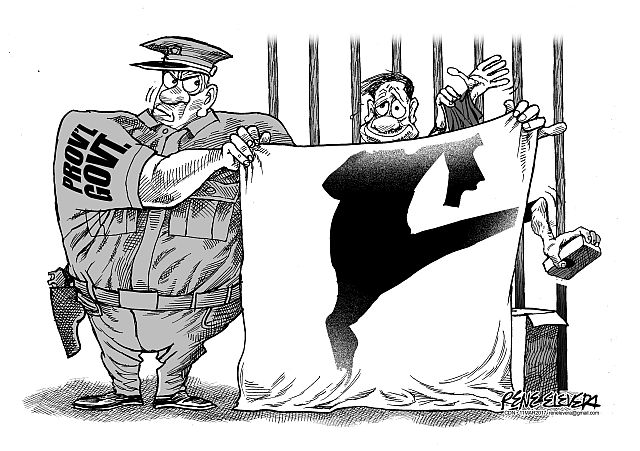
A Congressional investigation into the strip search conducted on inmates of the Cebu Provincial Detention and Rehabilitation Center (CPDRC) should go beyond just scoring political brownie points for its chief proponent, former Cebu governor and now Rep. Gwendolyn Garcia of Cebu’s Third District.
In calling for a Lower House inquiry into the incident, Garcia cited her own previous record in which her brother, former Capitol consultant on jail matters Byron Garcia, instituted a program that would later result in the creation of the world-renowned “dancing inmates.”
Conditions deteriorated somewhat when the former governor dropped Byron from his post, but frankly speaking, the CPDRC is anything but livable for the more than 2,000 inmates detained there since the facility was built to accommodate only a maximum of 1,000 plus inmates.
It was only during the Duterte administration’s intensified crackdown on illegal drugs that the country’s jails were exposed as a lair for the manufacture and rampant distribution of illegal drugs, and this included the CPDRC.
In fact, this grim reality was exposed during a raid at the National Penitentiary conducted by then Justice secretary Leila de Lima, but this operation also led to a full-blown Congressional investigation that accused the now senator of having benefited from the drug trade.
In this respect, Governor Davide must have underestimated the possibility of illegal drug trade within the CPDRC and remained content in the management of his chosen consultant for jail matters.
Is it possible that the illegal drug trade operated at the CPDRC below the radar during the term of then governor Garcia? That possibility cannot be ruled out since the facility does house convicted criminals or criminal suspects.
But even if that were the case, the major players like Alvaro “Barok” Alvaro, the slain Jeffrey “Jaguar” Diaz and Kerwin Espinosa were all locked up at the National Penitentiary where they would eventually establish contacts then proceed to build and expand their network.
In the intensified war against illegal drugs, Davide’s decision to allow the Philippine Drug Enforcement Agency (PDEA) nearly free rein in its Operation Greyhound may have likely stemmed from wanting to prove to the Duterte administration his own commitment to crack down hard on drug-dealing inmates.
Based on public outrage over their latest inspection, the governor and regional PDEA Chief Yogi Felimon Ruiz may want to recalibrate their approach and implement non-invasive inspection methods on inmates while ensuring transparency during their operations.
That may not stop the investigation, but more importantly, it will assure the families of these inmates and the public that the provincial government can do an effective job of stopping the illegal drug trade on its tracks within the CPDRC without compromising on whatever dignity remains of their inmates.